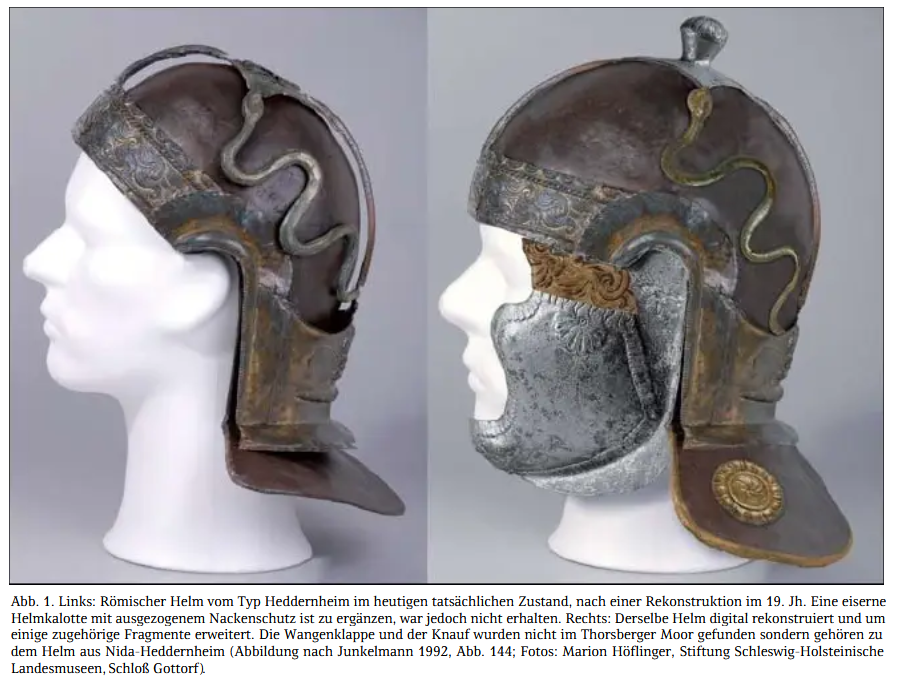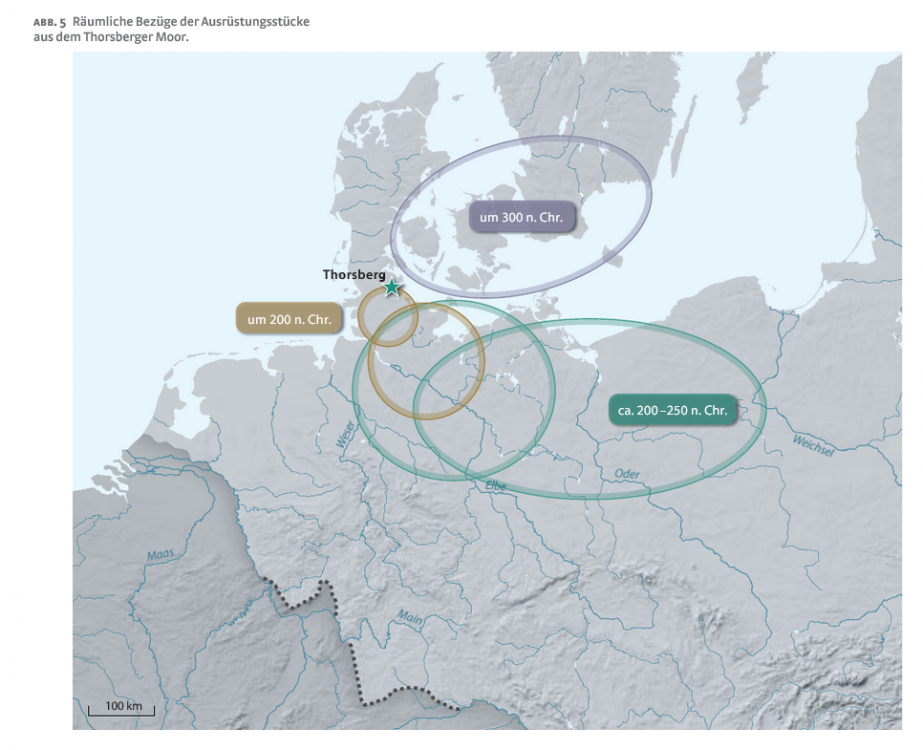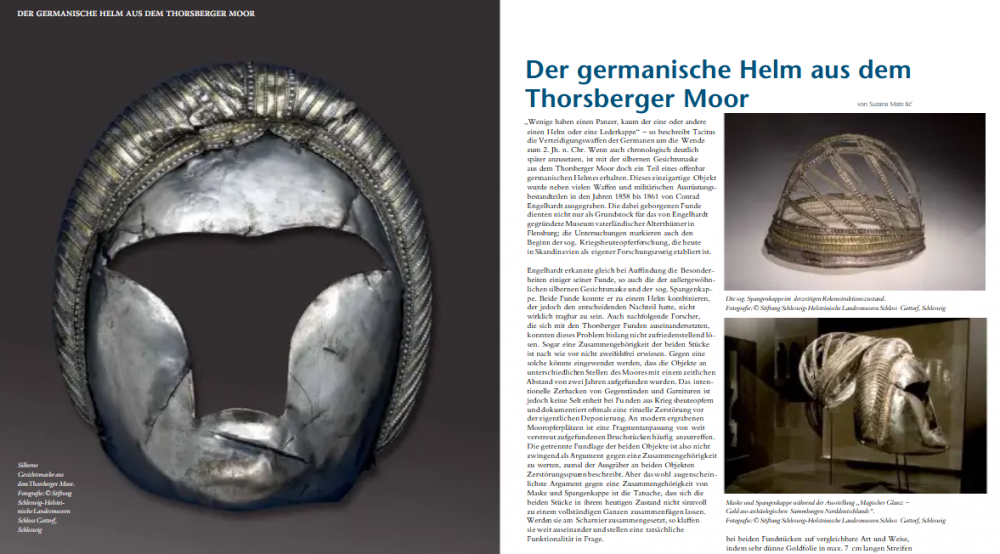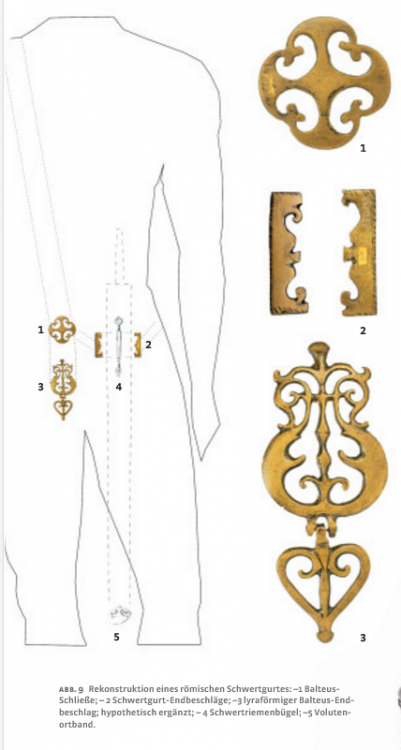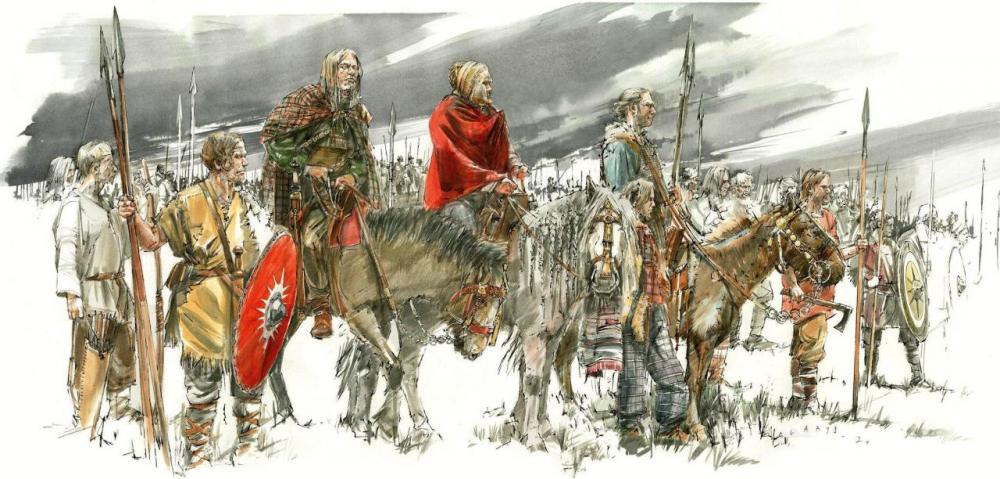-
Posts
2.410 -
Joined
-
Last visited
-
Days Won
83
Everything posted by Genava55
-
.thumb.jpg.b21ca1d0c15fb56b42c39b25a0a40815.jpg)
Cavalry in ancient Hispania
Genava55 replied to Lion.Kanzen's topic in Tutorials, references and art help
de Frías, M. S. (2010). Sobre algunos textos clásicos referentes a la caballería de los celtíberos y al simbolismo de sus armas. Gladius, 30, 137-154. 227-Texto del artículo-233-1-10-20110202.pdf + https://www.academia.edu/729176/_Aristocratic_riders_and_the_appearance_of_a_true_cavalry_in_the_Iberian_Iron_Age_to_copnceptually_different_ambits_in_Spanish_Aristócratas_a_caballo_y_la_existencia_de_una_verdadera_caballería_en_la_cultura_ibérica_dos_ámbitos_conceptuales_diferentes_ -
No archer for the Britons. But a swordsman could work. With the ability to shoot javelin from the chariot when there is someone onboard.
-
There is the Caledonian swordsman mentioned by Tacitus in Agricola and the archaeological records of scabbards that could have been carried in the back, mostly in the Northern part of Britain. The chariot should be a major element of the British warfare. Any champion with one of those highly decorated shields could fit as well.
-
.thumb.jpg.b21ca1d0c15fb56b42c39b25a0a40815.jpg)
we need volunteers ... There are many absent members
Genava55 replied to Lion.Kanzen's topic in Gameplay Discussion
For what? -
.thumb.jpg.b21ca1d0c15fb56b42c39b25a0a40815.jpg)
Civ: Germans (Cimbri, Suebians, Goths)
Genava55 replied to wowgetoffyourcellphone's topic in Delenda Est
Yeah this is generally a storage, it's elevated to protect it from ground moisture and rats. The Celts did the same. -
.thumb.jpg.b21ca1d0c15fb56b42c39b25a0a40815.jpg)
Addition of Han Chinese to 0AD
Genava55 replied to Yekaterina's topic in Game Development & Technical Discussion
Good job. This is a good compromise between accuracy and game design. Personally I approve. -
.thumb.jpg.b21ca1d0c15fb56b42c39b25a0a40815.jpg)
Addition of Han Chinese to 0AD
Genava55 replied to Yekaterina's topic in Game Development & Technical Discussion
Since you are doing everything, working on every front, it is up to you to decide. There is no art department in reality xD -
.thumb.jpg.b21ca1d0c15fb56b42c39b25a0a40815.jpg)
Civ: Germans (Cimbri, Suebians, Goths)
Genava55 replied to wowgetoffyourcellphone's topic in Delenda Est
https://www.academia.edu/3990448/Römische_Helme_aus_dem_Thorsberger_Moor https://www.academia.edu/3990440/Der_germanische_Helm_aus_dem_Thorsberger_Moor https://www.researchgate.net/publication/270900114_Neue_Forschungen_in_Thorsberg_und_Nydam -
.thumb.jpg.b21ca1d0c15fb56b42c39b25a0a40815.jpg)
Addition of Han Chinese to 0AD
Genava55 replied to Yekaterina's topic in Game Development & Technical Discussion
How much is available the art department? Personally I think that it is better to split the two development in parallels. Doing the art development apart while the others are working on the development of A25 (which concerns a lot of questions about balancing and differentiating I think) then when A25 is ready, starting the implementation and dedicating A26 especially for the implementation of this new civ. -
.thumb.jpg.b21ca1d0c15fb56b42c39b25a0a40815.jpg)
Addition of Han Chinese to 0AD
Genava55 replied to Yekaterina's topic in Game Development & Technical Discussion
I think it should be planned in a roadmap. Including them in A25 could cause a delay of its release, taking again very long to finish it. Probably it is better to include them for A26. -
.thumb.jpg.b21ca1d0c15fb56b42c39b25a0a40815.jpg)
Addition of Han Chinese to 0AD
Genava55 replied to Yekaterina's topic in Game Development & Technical Discussion
Personally, I am in favor to include them at some point. -
Following up
-
.thumb.jpg.b21ca1d0c15fb56b42c39b25a0a40815.jpg)
Bibliography and references about ancient times (+ book reviews)
Genava55 replied to Genava55's topic in General Discussion
Military developments in the 'Late Iberian' culture (c. 237-c. 195 BC): Mediterranean influences in the 'Far West' via the Carthaginian military (in English) The article covers in fact much more than simply this period. https://www.academia.edu/1473558/Military_developments_in_the_Late_Iberian_culture_c_237_c_195_BC_Mediterranean_influences_in_the_Far_West_via_the_Carthaginian_military_in_English_?email_work_card=title -
-
Numidian mercenary of Hasmonean Dynasty (130-63 BCE)
-
Me neither, maybe a mod would scrap them. Those huge swords for tiny hands remind me of warcraft design.
-
.thumb.jpg.b21ca1d0c15fb56b42c39b25a0a40815.jpg)
Civ: Germans (Cimbri, Suebians, Goths)
Genava55 replied to wowgetoffyourcellphone's topic in Delenda Est
Isn't Arminius a cavarly commander and a Roman eques? -
.thumb.jpg.b21ca1d0c15fb56b42c39b25a0a40815.jpg)
Civ: Germans (Cimbri, Suebians, Goths)
Genava55 replied to wowgetoffyourcellphone's topic in Delenda Est
As a complementary info, we reached the same conclusion I think -
https://phys.org/news/2021-03-ancient-genomes-decline-scythians.html Ancient genomes trace the origin and decline of the Scythians Generally thought of as fierce horse warriors, the Scythians were a multitude of Iron Age cultures who ruled the Eurasian steppe, playing a major role in Eurasian history. A new study published in Science Advances analyzes genome-wide data for 111 ancient individuals spanning the Central Asian Steppe from the first millennia BCE and CE. The results reveal new insights into the genetic events associated with the origins, development and decline of the steppe's legendary Scythians. Because of their interactions and conflicts with the major contemporaneous civilizations of Eurasia, the Scythians enjoy a legendary status in historiography and popular culture. The Scythians had major influences on the cultures of their powerful neighbors, spreading new technologies such as saddles and other improvements for horse riding. The ancient Greek, Roman, Persian and Chinese empires all left a multitude of sources describing, from their perspectives, the customs and practices of the feared horse warriors that came from the interior lands of Eurasia. Still, despite evidence from external sources, little is known about Scythian history. Without a written language or direct sources, the language or languages they spoke, where they came from and the extent to which the various cultures spread across such a huge area were in fact related to one another, remain unclear. The Iron Age transition and the formation of the genetic profile of the Scythians A new study published in Science Advances by an international team of geneticists, anthropologists and archeologists lead by scientists from the Archaeogenetics Department of the Max Planck Institute for the Science of Human History in Jena, Germany, helps illuminate the history of the Scythians with 111 ancient genomes from key Scythian and non-Scythian archaeological cultures of the Central Asian steppe. The results of this study reveal that substantial genetic turnovers were associated with the decline of the long-lasting Bronze Age sedentary groups and the rise of Scythian nomad cultures in the Iron Age. Their findings show that, following the relatively homogenous ancestry of the late Bronze Age herders, at the turn of the first millennium BCE, influxes from the east, west and south into the steppe formed new admixed gene pools. The diverse peoples of the Central Asian Steppe The study goes even further, identifying at least two main sources of origin for the nomadic Iron Age groups. An eastern source likely originated from populations in the Altai Mountains that, during the course of the Iron Age, spread west and south, admixing as they moved. These genetic results match with the timing and locations found in the archeological record and suggest an expansion of populations from the Altai area, where the earliest Scythian burials are found, connecting different renowned cultures such as the Saka, the Tasmola and the Pazyryk found in southern, central and eastern Kazakhstan respectively. Surprisingly, the groups located in the western Ural Mountains descend from a second separate, but simultaneous source. Contrary to the eastern case, this western gene pool, characteristic of the early Sauromatian-Sarmatian cultures, remained largely consistent through the westward spread of the Sarmatian cultures from the Urals into the Pontic-Caspian steppe. The decline of the Scythian cultures associated with new genetic turnovers The study also covers the transition period after the Iron Age, revealing new genetic turnovers and admixture events. These events intensified at the turn of the first millennium CE, concurrent with the decline and then disappearance of the Scythian cultures in the Central Steppe. In this case, the new far eastern Eurasian influx is plausibly associated with the spread of the nomad empires of the Eastern steppe in the first centuries CE, such as the Xiongnu and Xianbei confederations, as well as minor influxes from Iranian sources likely linked to the expansion of Persian-related civilization from the south. Although many of the open questions on the history of the Scythians cannot be solved by ancient DNA alone, this study demonstrates how much the populations of Eurasia have changed and intermixed through time. Future studies should continue to explore the dynamics of these trans-Eurasian connections by covering different periods and geographic regions, revealing the history of connections between west, central and east Eurasia in the remote past and their genetic legacy in present day Eurasian populations. https://advances.sciencemag.org/content/7/13/eabe4414
-
.thumb.jpg.b21ca1d0c15fb56b42c39b25a0a40815.jpg)
Total War saga news & videos
Genava55 replied to Lion.Kanzen's topic in Introductions & Off-Topic Discussion
-
.thumb.jpg.b21ca1d0c15fb56b42c39b25a0a40815.jpg)
Total War saga news & videos
Genava55 replied to Lion.Kanzen's topic in Introductions & Off-Topic Discussion
@Lion.Kanzen @wowgetoffyourcellphone Total War Rome Remastered




